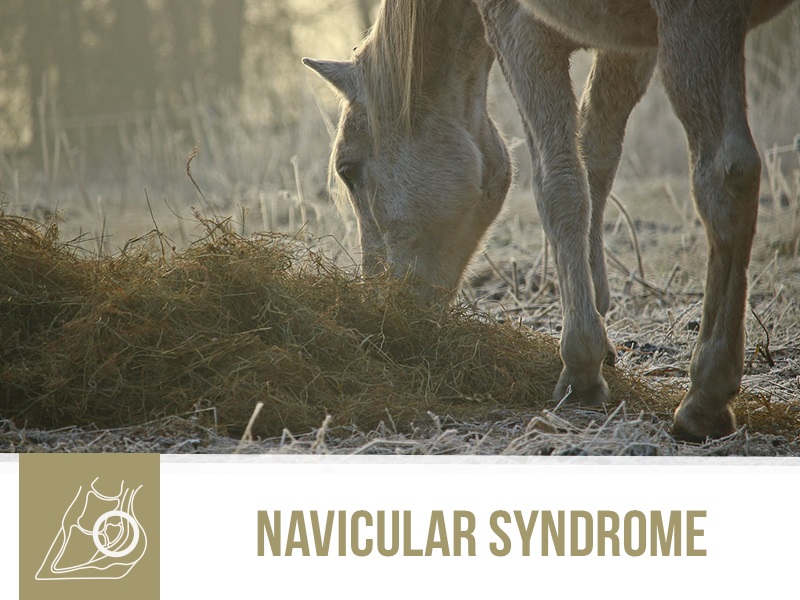
Navicular Syndrome

Horses have very particular anatomy and physiology. They are very large animals, and their weight is all supported by 4 hoof-covered phalanges or fingers.
Yes, you read that correctly! Horses only have one complete finger in each limb, and the last distal phalanx (the coffin bone) is covered with the hoof, and it's the only structure that makes contact with the floor. This is one of the reasons horses are so prone to developing lameness problems.
One of these problems is navicular syndrome. This syndrome affects a tiny bone named navicular bone that moves with the two last phalanges. Navicular syndrome usually affects the front limbs of the horse, and one foot is often in worse shape than the other. This syndrome can have many causes and can result in different clinical signs, the most common one being lameness. Overweight horses are more prone to developing this condition.
If you have a horse with navicular issues, you may notice him or her appear lame in one (initially) or both front limbs. While lunging, you may notice lameness on the inside limb in both directions. You may also notice he or she sets their feet toes first. Lameness is usually more evident after work/exercise and gets better with rest.
Unfortunately, navicular syndrome is a degenerative condition, and the navicular bone suffers alterations over time with inflammation and density loss. The soft tissues around it may also be consequently affected.
Since this is known to be a progressive degenerative condition which is usually painful and can cause disabling lameness, navicular syndrome always needs to be addressed and managed so your horse can maintain a good and active life.
Would you like to know more about horses? Check our Equine Courses:
Equine courses
Published: 04 Jul 2018
Read the previous article: Cats and allergies

